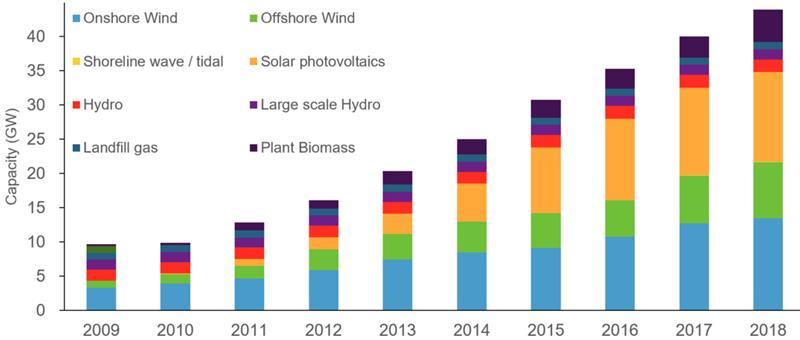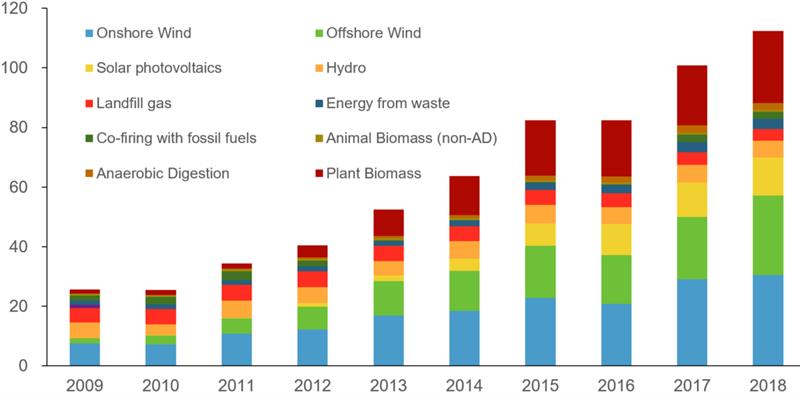Powerful electronics are the key to realising innovative systems in this space and this is where the component distribution sector can help with its experience in both products and applications.
The end of fossil fuels is in sight, yet energy consumption continues to increase – be it in the electricity sector (households/industries), the heating sector (apartment buildings/public buildings) or in the transport sector (vehicles, aircraft, trains/other means of transport).
Although energy is being used ever more efficiently and, in some cases, even conserved, economic growth and higher consumption are preventing a more substantial decrease in energy use.
This is where renewable energy sources, such as wind and solar energy, biomass and hydro power, come into play. Since the expansion of renewable energies is a stated objective of the European Union, all member states are required to take action and, despite Brexit, the UK is also committed to reducing its carbon footprint.
At present, wind is among the leading providers of electricity among the renewable energies, followed by solar energy.
The largest wind-turbine generator systems (WTGS) currently available on the market have a generator output in excess of 7.6MW. Just one of these units can supply sufficient electricity to power approximately 5,700 households.
The solar energy that reaches the earth each year is around 10,000 times greater than global demand for energy and solar radiation can be converted directly into electricity with the help of PV systems.
Electronics as a key player
Regardless of the approach used – wind, solar, biomass, hydro - (further) development of technologies in the renewable energy sector is an important area of focus in research and the economy.
All of these technologies have one thing in common: innovative electronics play a key role.
In wind-turbine generator systems, for example, they are used to power the rotors and ensure the reliable delivery of electricity into the network. In PV systems, they are used in inverters to enable the conversion of power.

Installed capacity (GW) of renewable energy sources in the UK
So, without electronics, biogas plants, geothermal, hydro power or tidal power stations and other systems would be unable to function. Then there are electrical storage systems, local distributor networks and smart electricity meters, among others. Improved drive technology, software and infrastructure – these factors offer vast potential for the electronics industry.
The role of distributors
This is precisely where the component distributors, whose business model has undergone an enormous transformation over the past 25 years, have a critical role to play.
Today’s distributors are specialists in their target markets, and they operate people-to-people business models. In their capacity as intermediaries between manufacturers and customers, they contribute significantly to the creation of demand.
Distributors provide purchasers and developers with vendor-neutral advice and professional support when it comes to the selection and design-in of technologically and commercially suitable components for their applications.
We need only take the example of a wind-turbine generator system (WTGS) and its drive system, in which control elements with sensors and the motor must be integrated into the most compact unit possible. Here, a wide variety of components from different manufacturers must function seamlessly with one another and ensure maximum efficiency to enable the project to reach a successful conclusion.
This cannot work without extensive product expertise regarding the suitable components, the overall applications and the respective market and its specific requirements. WTGS installations, for instance, must withstand exceptionally harsh operating conditions that can range from extreme heat to storms all the way to hail and ice.
As with many other industries, the focus when it comes to harnessing renewable energies is on highly available and reliable systems. This is also demonstrated by the example of the wind-turbine generator system: at a scale of 100 to 1000 kilowatts, set-up and installation including acceptance costs are between 600 and 870 euros per kilowatt of output. As a result, average costs of €735,000 are incurred for each megawatt of installed power.
If the WTGS is now rendered non-functional due to a failed component, costs can add up quickly depending on the duration of the failure. This calculation raises the reliability and availability of replacement components to a new level of importance.
The need for support applies not just to the generation of energy but also to the demand side. For instance, companies that develop more energy-efficient systems and/or devices are contributing to a more sustainable future by reducing energy consumption while maintaining the same quality of life. They are often driven by innovative ideas whose implementation requires expertise in conjunction with the components. In this scenario, distributors not only contribute technical expertise - with their expertise in the area of design-in, they can also act as key partners for developments on the part of the manufacturer.
Nowadays, distributors are forward-looking specialists with service offerings of varying scope – ranging from components and availability, EoL, traceability, logistics all the way to technical expertise regarding applicable environmental regulations. No matter how their services are configured – distributors perform an increasingly important role.

Electricity generated (TWh) from renewable sources in the UK
Economic power
Renewable energies are ready and waiting to be used in an intelligent way. Everyone can participate in the decentralised expansion of renewable energies, thereby promoting regional value added through installation, maintenance and operation.
Towards the end of 2018, the EU ruled that the share of renewable energies should increase from the previous figure of 30% to 32% of total consumption and adopted Directive (EU) 2018/2001, which must be implemented in the national legislation of the individual countries by 30 June 2021. In addition, consumers throughout the EU are to be empowered for the first time to store electricity themselves and sell it at normal market prices.
With regard to the expansion of innovative concepts, Germany scores highly as a global leader in technology with many years of successful development on the domestic market. Combined with the new EU Directives, growth in demand is virtually guaranteed. All of this means that there is ample potential for the distribution sector to use its expertise to play a driving role in this future market.
Author details:
Andreas Falke is Managing Director, FBDi













